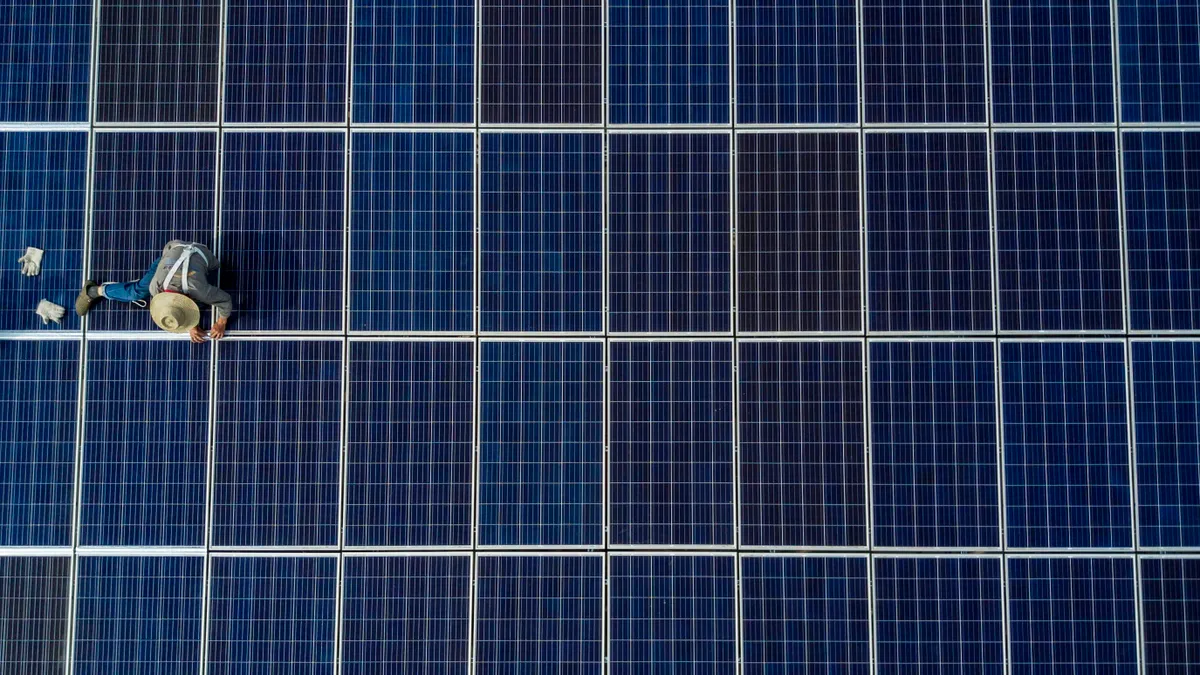New research from think tank Rocky Mountain Institute projects that the 2023 United Nations Climate Change Conference’s goal of tripling global renewables capacity by 2030 is “now within reach” if renewable energy additions stay on an exponential growth path.
“The fossil fuel era is over,” said the report, which RMI completed in partnership with the Bezos Earth Fund and released Thursday. “Fossil fuel demand in electricity has reached a peak at around 18,000 TWh, will plateau for a few years, and will fall by between 16% and 30% by the end of this decade.”
Conversely, RMI concluded that solar, wind and batteries are following a standard path for new technology adoption where learning curves drive falling prices, which in turn drive capacity growth. As a result, the group says that liner change is “no longer credible.”
“Pandora’s box has been opened,” the think tank wrote. “In every area of the energy system, people are hunting for solutions to improve efficiency, reduce carbon emissions, and lower costs. Many solutions blend to spawn new ones.”
However, while RMI projects global success in meeting the International Energy Agency’s goal of net-zero emissions by 2050, they do not expect success in limiting global warming to 1.5 degrees Celsius.
“That requires faster change,” said the report.
The exponential growth of renewables technology will also “of course not last forever,” RMI said, though it projects that the “declining growth rates characteristic of S-curve logic will start after 2030.”
Successful renewables buildout also requires a simultaneous focus on improving the electrical grid, and improving permitting and regulatory systems, the report said. In the U.S., interconnection backlogs have skyrocketed since 2005, with an April report finding 1,350 GW of generation and 680 GW of storage waiting to connect to the grid. More than 95% of queued energy is zero-carbon.
RMI’s report followed the IEA’s Wednesday release of its most recent clean energy progress report, which found that renewable energy adoption is growing faster than expected, but “faster change is urgently needed across most components of the energy system” to achieve net zero by 2050.
IEA tracked “remarkable gains in the past year” including record sales of electric vehicles and renewable electricity capacity having its largest-ever deployment.
While the agency found that nearly all aspects of the clean energy transition still fall under the category of “not on track” or “more efforts needed,” both solar and electric vehicles are now “on track” by IEA’s metrics.
“Solar PV was upgraded in this edition, as the annual growth in generation in 2022 of 26% is now aligned with the average compound annual growth rate needed from now to 2030 in the Net Zero Scenario,” IEA said.
However, RMI’s report said that many forecasters – IEA included – anticipated linear growth for solar and did not predict its exponential capacity growth.
“For many years, the IEA forecast linear supply growth of solar under its business-as-usual scenarios, even as solar supply continued to rise exponentially. But the IEA was not alone — even BNEF has been surprised by the speed of deployment of solar,” RMI said.
RMI anticipates that drivers of change like policy pressure, lower costs and innovations that reduce technological barriers will increase between now and 2030, causing exponential growth to continue.
“If the energy transition has had a lesson thus far, it is that the ceiling of the possible is continuously rising,” the report said. “If anything, we fear our range is more likely to be too low than too high.”














